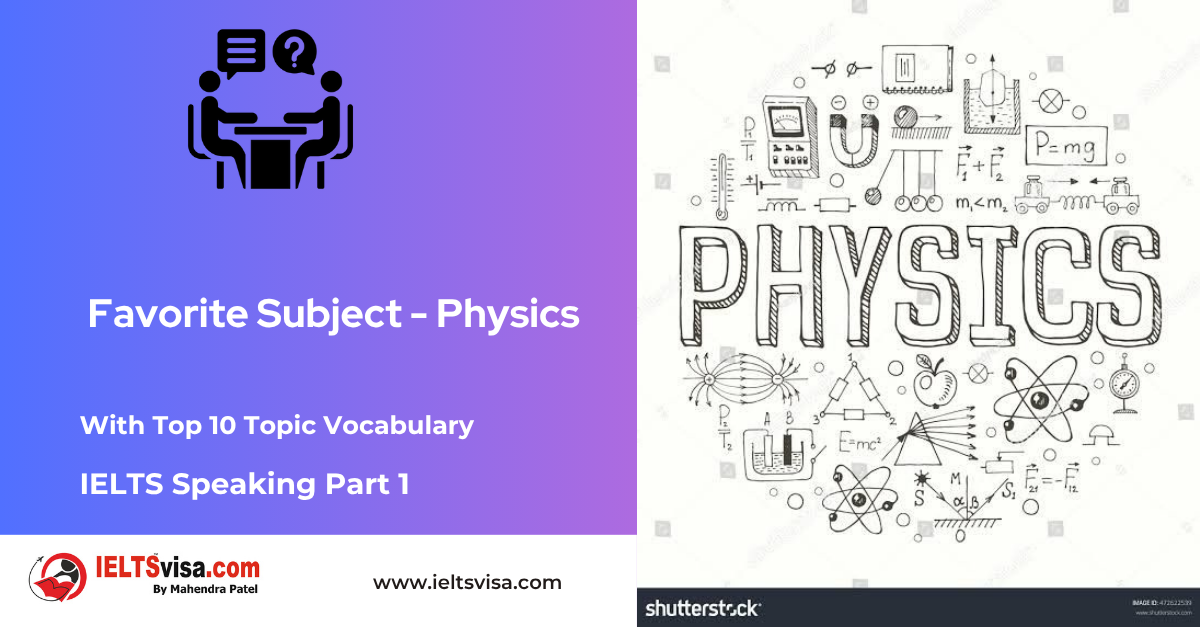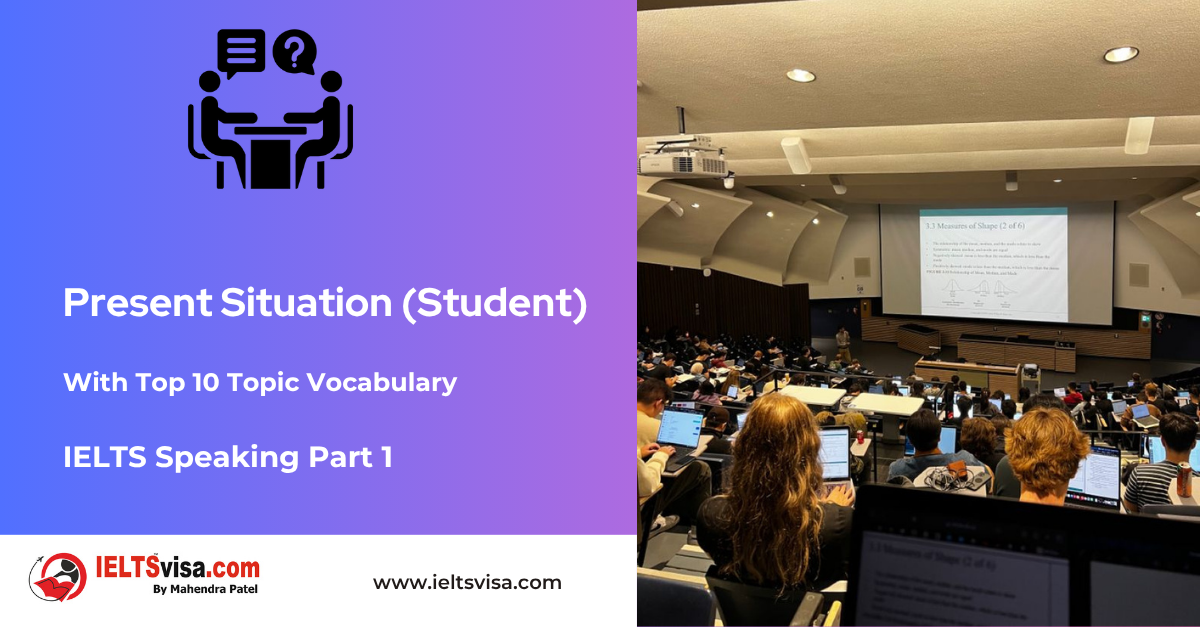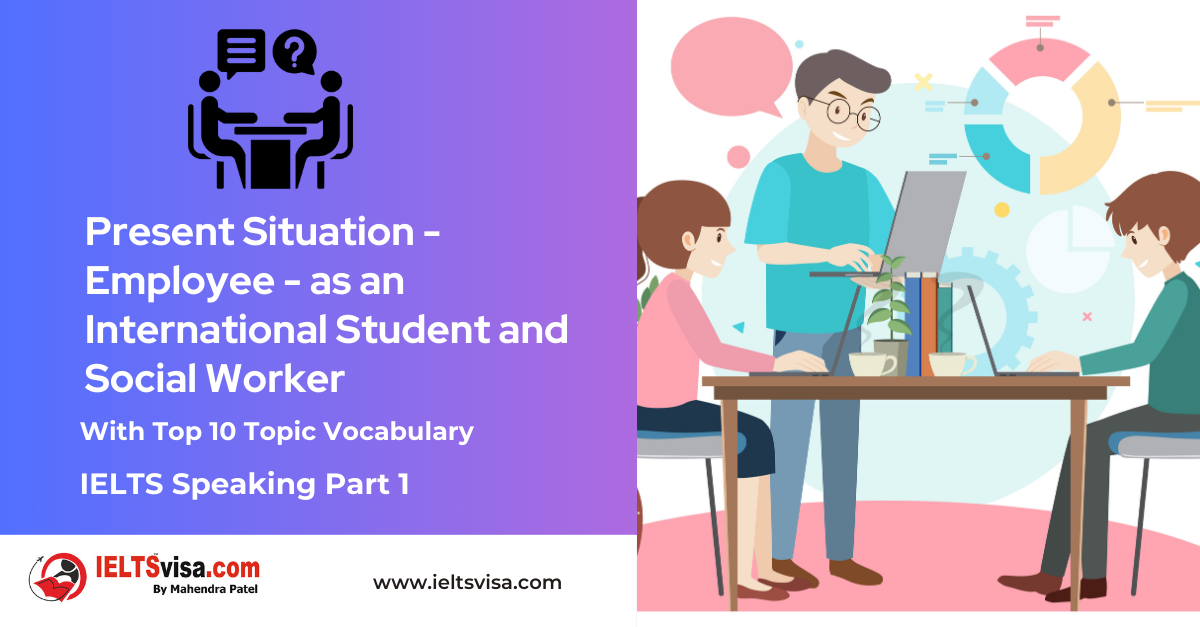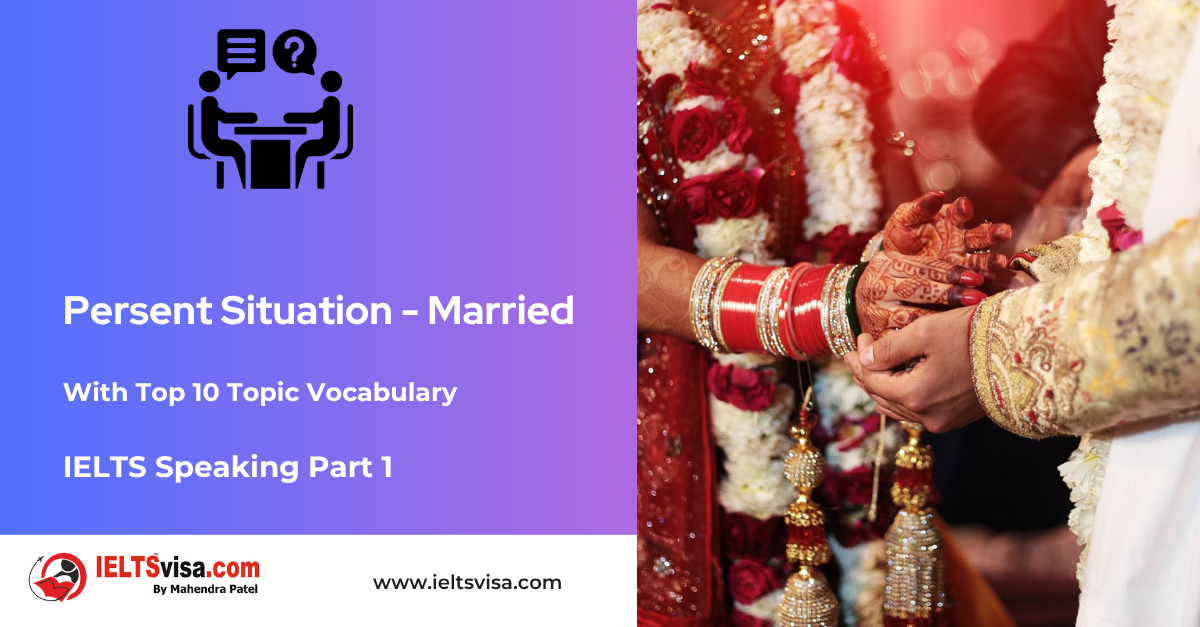More about Adjectives
Grammar for IELTS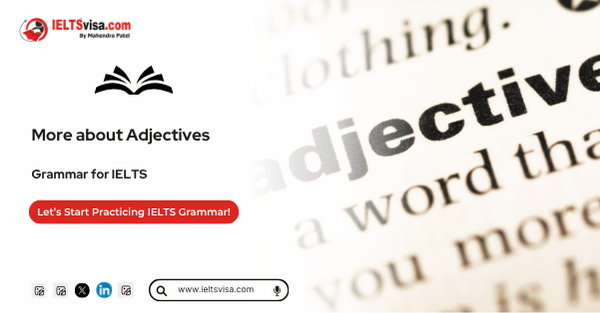
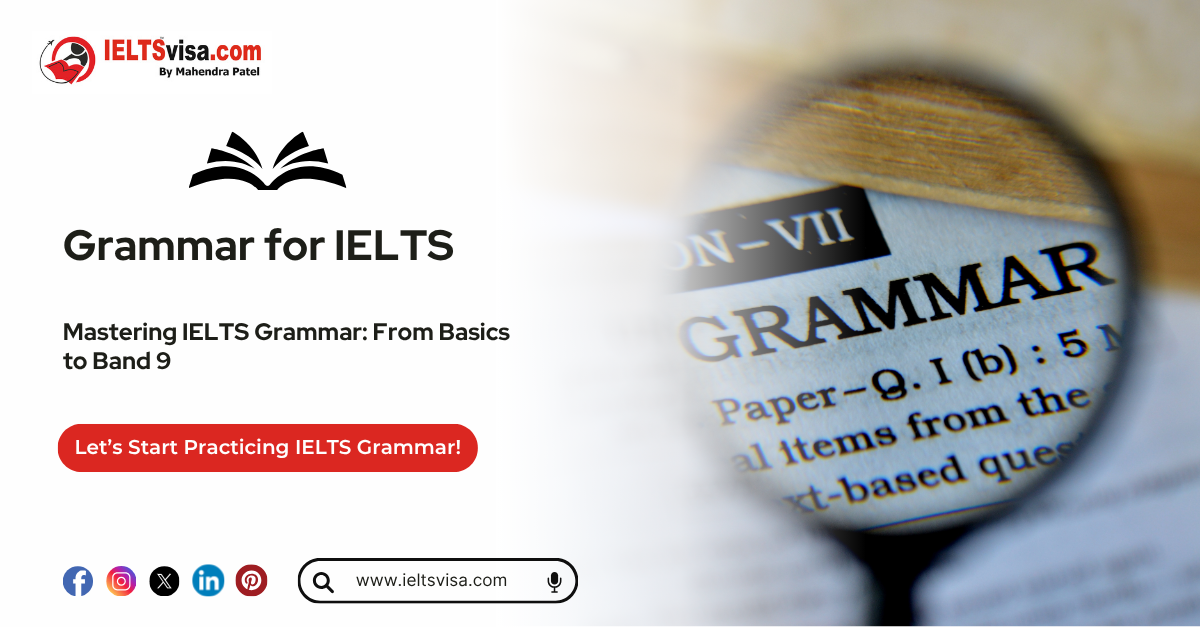
More about Adjectives
Adjectives are the building blocks of descriptive language. They bring life and detail to your sentences by providing information about the qualities, quantities, or characteristics of a noun or pronoun. For children and beginners learning English, mastering adjectives is a vital step in creating engaging and precise communication.
Table of Contents
1. Definition of an Adjective
2. How to Use Adjectives
3. Types of Adjectives
4. Degrees of Comparison in Adjectives
5. Coordinate vs. Non-Coordinate Adjectives
6. Common Mistakes with Adjectives
7. Adjectives vs. Adverbs
8. Adjective Usage Tips
9. Frequently Asked Questions (FAQs) about Adjectives
Definition of an Adjective
An adjective is a word that describes or modifies a noun or pronoun. Adjectives provide details that help readers or listeners understand what kind of noun is being referred to, how many there are, or which one is meant.
Examples of Adjectives:
-
- Big, blue, beautiful
- Two, several, many
How to Use Adjectives
Adjectives typically appear before the noun they modify or after a linking verb when used as predicate adjectives.
Examples of Adjectives:
1. Before a noun:
-
-
- She wore a lovely dress.
- They live in a small town.
-
2. After a linking verb:
-
-
- The sky looks clear.
- This soup tastes delicious.
-
Adjectives can also describe how much or how many of something there is:
-
-
- Three chairs, no apples, and many books.
-
Types of Adjectives
Adjectives come in various types, each serving a specific function:
1. Descriptive Adjectives: Describe qualities or states.
-
-
- Example: Bright, kind, tall
-
2. Quantitative Adjectives: Indicate the quantity of a noun.
-
-
- Example: Some, many, a few
-
3. Demonstrative Adjectives: Point to specific nouns.
-
-
- Example: This, that, these, those
-
4. Possessive Adjectives: Show ownership.
-
-
- Example: My, your, his
-
5. Interrogative Adjectives: Used in questions.
-
-
- Example: Which, what, whose
-
6. Proper Adjectives: Derived from proper nouns.
-
-
- Example: French cuisine, Shakespearean plays
-
Degrees of Comparison in Adjectives
Adjectives can compare two or more nouns or pronouns using degrees of comparison:
1. Positive Degree: Describes a quality in its basic form.
-
- Example: Bright, tall
2. Comparative Degree: Compares two nouns or pronouns.
-
- Example: Brighter, taller
- Formed by adding “-er” or using “more” for longer adjectives.
3. Superlative Degree: Indicates the highest degree of quality.
-
- Example: Brightest, tallest
- Formed by adding “-est” or using “most.”
Examples:
-
- Positive: She is a kind person.
- Comparative: She is kinder than her brother.
- Superlative: She is the kindest person in the group.
Coordinate vs. Non-Coordinate Adjectives
Coordinate Adjectives: Modify a noun equally and are separated by commas or conjunctions.
-
- Example: The long, winding road.
Non-Coordinate Adjectives: Work together to form a single idea and are not separated.
-
- Example: A beautiful silk scarf.
Common Mistakes with Adjectives
1. Using Adjectives Instead of Adverbs:
-
- Incorrect: She runs quick.
- Correct: She runs quickly.
2. Misplacing Adjectives:
-
- Incorrect: The dog in the yard big barked.
- Correct: The big dog in the yard barked.
3. Confusing Degrees of Comparison:
-
- Incorrect: This is the more brighter star.
- Correct: This is the brightest star.
Adjectives vs. Adverbs
Adjectives modify nouns or pronouns, while adverbs modify verbs, adjectives, or other adverbs.
Examples:
-
- Adjective: He is a happy child.
- Adverb: He sings happily.
Adjective Usage Tips
1. Be Specific: Use adjectives to provide clear and precise descriptions.
-
- Instead of a big house, say a spacious mansion.
2. Avoid Overusing Adjectives: Too many adjectives can clutter your writing.
-
- Overloaded: She wore a long, flowing, bright, and beautiful gown.
- Concise: She wore a beautiful gown.
3. Choose the Right Order: Follow the typical adjective order in English:
Opinion > Size > Age > Shape > Color > Origin > Material > Purpose.
-
- Example: A lovely small antique round wooden table.
Frequently Asked Questions (FAQs) about Adjectives
Q1. What is an adjective?
An adjective is a word that describes a noun or pronoun by giving information about its qualities, size, shape, color, amount, or state.
Q2. Can a noun be used as an adjective?
Yes, nouns can act as adjectives when they describe another noun.
-
- Example: The basketball court.
Q3. What is the difference between adjectives and adverbs?
Adjectives describe nouns or pronouns, while adverbs modify verbs, adjectives, or other adverbs.
-
- Example: She is happy (adjective). She sings happily (adverb).
Q4. What are examples of adjectives?
Words like blue, tall, happy, seven, and French are adjectives.
Q5. Can adjectives stand alone?
Yes, sometimes adjectives are used as nouns, especially with “the” to describe groups.
-
- Example: The rich should help the poor.

Our Books
Master IELTS Speaking Part 1
IELTS Writing Task 1 Book
IELTS Writing Task 2 Book
Practice IELTS Other Modules
IELTS Listening
The IELTS Listening test assesses how well you can understand spoken English in various contexts. It lasts about 30 minutes and is divided into four sections with a total of 40 questions. The listening tasks become increasingly difficult as the test progresses.
IELTS Academic Reading
The IELTS Academic Reading section assesses your ability to understand and interpret a variety of texts in academic settings. It is designed to evaluate a range of reading skills, including skimming for gist, reading for main ideas, reading for detail, understanding inferences, and recognizing a writer's opinions and arguments.
IELTS Speaking
The IELTS Speaking test assesses your ability to communicate in English on everyday topics. It lasts 11-14 minutes and consists of three parts: introduction, cue card, and a discussion based on the cue card topic.
IELTS General Reading
IELTS General Reading tests your ability to understand and interpret various types of texts. Here are some key areas and types of content you can expect to encounter in the reading section, along with tips for effective preparation.
IELTS Academic Writing Task 1
In IELTS Academic Writing Task 1, you are presented with a visual representation of information, such as graphs, charts, tables, or diagrams, and you are required to summarize, compare, or explain the data in your own words.
IELTS General Writing Task 1
In IELTS General Writing Task 1, you are required to write a letter based on a given situation. The letter can be formal, semi-formal, or informal, depending on the prompt. Here’s a breakdown of the key components to include in your letter
IELTS Academic Writing Task 2
In IELTS Academic Writing Task 2, you are required to write an essay in response to a question or topic. Here’s a guide to help you understand the essential elements of this task
IELTS Exam Tips
To succeed in the IELTS exam, practice regularly, familiarize yourself with the test format, improve your vocabulary, develop time management skills, and take mock tests to build confidence.
Grammer for IELTS
Grammar is the foundation of effective communication in English. Understanding tense usage, subject-verb agreement, and sentence structure enhances clarity and coherence in writing and speaking.
Vocabulary for IELTS
Vocabulary plays a crucial role in the IELTS (International English Language Testing System) exam, especially in the Speaking and Writing sections. Here’s an overview of why vocabulary is important and how it impacts your performance
RECENT IELTS SAMPLES QUESTIONS AND ANSWERS
IELTS Speaking Part 1 – Favourite Sujbect – Physics
IELTS Speaking Part 1 - Favourite Sujbect - Physics Q: What is your favourite subject? A: My favourite subject...
IELTS Speaking Part 1 – Present Situation (Student)
IELTS Speaking Part 1 - Present Situation (Student) Q1: Are you a student or do you work?A: I’m a full-time...
IELTS Speaking Part 1 – Present Situation – Employee – as an International Student and Social Worker
IELTS Speaking Part 1 - Present Situation - Employee - as an International Student and Social Worker Q1: Are...
IELTS Speaking Part 1 – Persent Situation – Employee- as an Electric Engineer
IELTS Speaking Part 1 - Persent Situation - Employee- as an Electric Engineer Q1: What do you do for a...
IELTS Speaking Part 1 – Persent Situation – Employee – as an Software Engineer
IELTS Speaking Part 1 - Persent Situation - Employee - as an Software Engineer Q1: What do you do for a...
IELTS Speaking Part 1 – Persent Situation – Married
IELTS Speaking Part 1 - Persent Situation - Married Q1: Are you married?A: Yes, I am married. My spouse and I...

